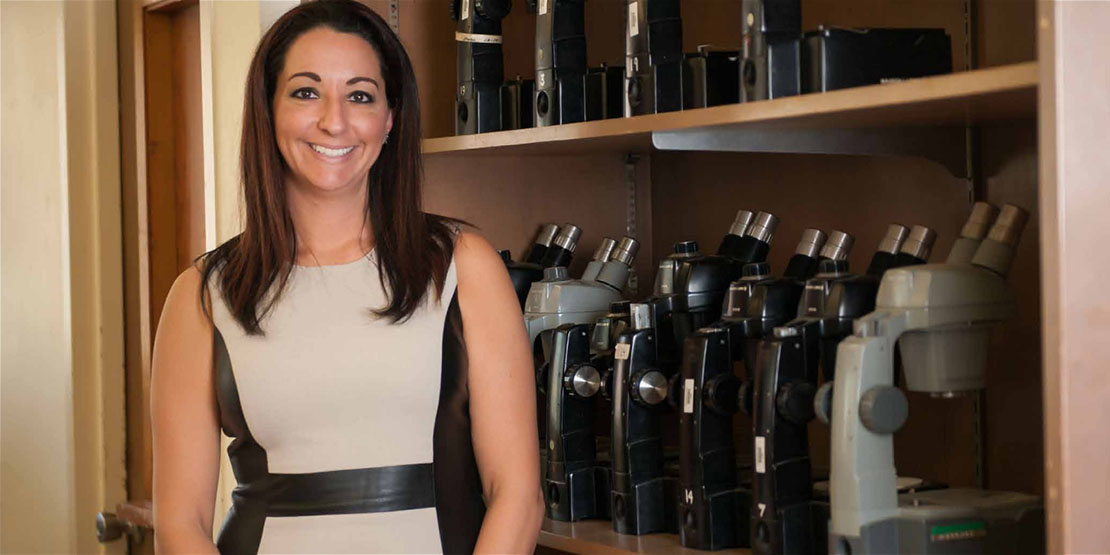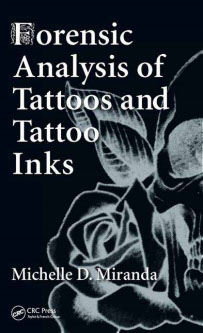Faculty Spotlight
Meet Michelle Miranda
Michelle Miranda's epiphany about tattoos brings clues to investigative work.

She does not operate a shop with images of hearts and arrows, skull and cross bones, and mermaids and pirates. But Dr. Michelle Miranda has gone from a forensic scientist to what could be called a 21st Century tattoo artist. Instead, Miranda uses the examination of tattoos to solve crimes.
Dr. Miranda teaches in the Department of Security Systems & Law Enforcement Technology, where she puts her interest in body art to work. Before joining the College, she was in the trenches, working for the NYPD in its Forensic Investigations Division's Trace Evidence Analysis Section, and later as a medical photographer on Long Island for the Suffolk County Medical Examiner's office and a death investigator for the ME in Rockland County.
"As a criminalist with the NYPD, I spent most of my time working in a crime lab," Dr. Miranda said. "The photographer position allowed me to get out of the lab and into the autopsy suite, and the death investigator position put me in the field and at scenes." It was at her Rockland County job that she had an epiphany about the value of tattoos in solving crimes.
"Traditional databases, such as those for fingerprints, DNA profiles and dental records, are limited. If the victim or suspect does not have a profile on file, these methods may not provide any information. But an individual's tattoos are often displayed and viewed by many, whether by family members, friends, coworkers, and of course, the tattoo artist. If the tattoo has enough characteristics and can be traced to one particular individual, then that can provide the information to guide an investigation, specifically in the search for a perpetrator.
"I hope my book creates awareness; I want all investigators and forensic scientists to be aware that tattoos and tattoo inks can be useful in forensic investigations," Dr. Miranda said.
Today she is a much-in-demand consultant to the law enforcement community. Her real love, however, is training students for careers in the field. "I truly enjoy teaching future police officers and lawyers about forensic science," she said. "It is rewarding when a former student reaches out to me after they have seen their first crime scene – or dead body. It is so important to teach these concepts to those likely to be first responders, or for those who are responsible for securing a crime scene even before the forensic scientists and investigators begin their work."
I truly enjoy teaching future police officers and lawyers about forensic science.


 Latest Issue
Latest Issue


 Orla LoPiccolo
Orla LoPiccolo

